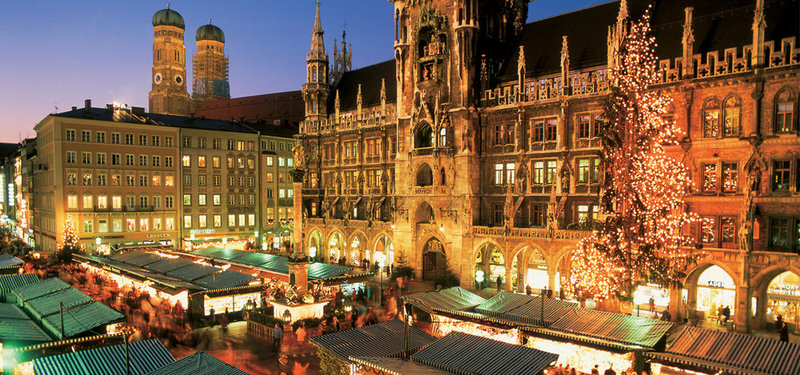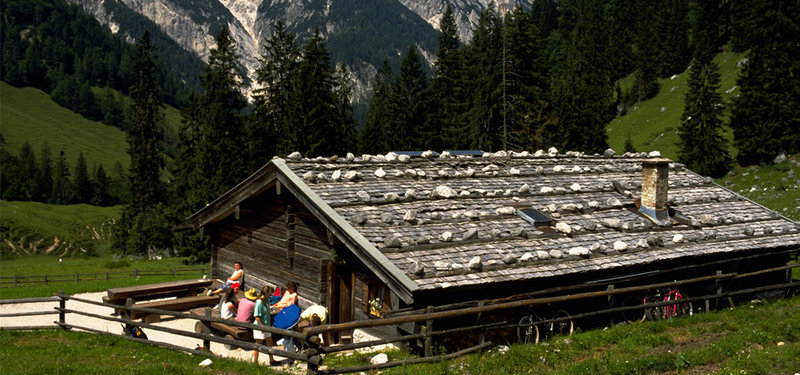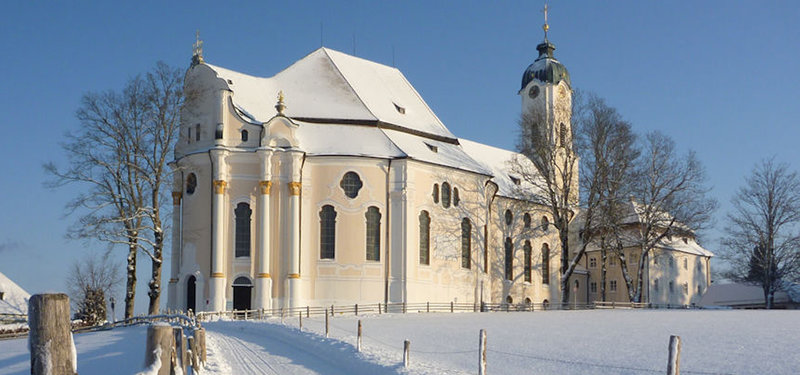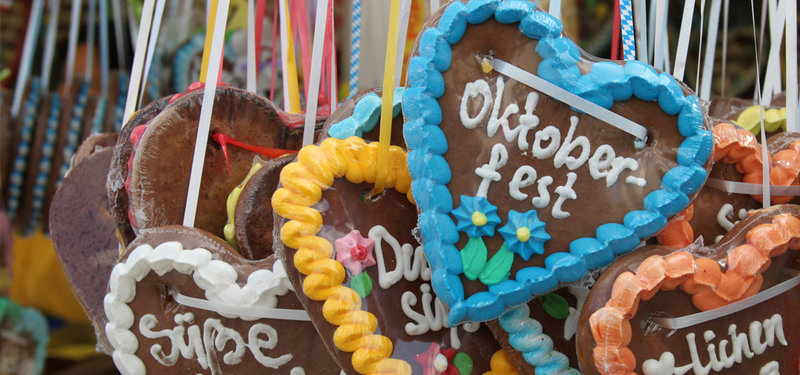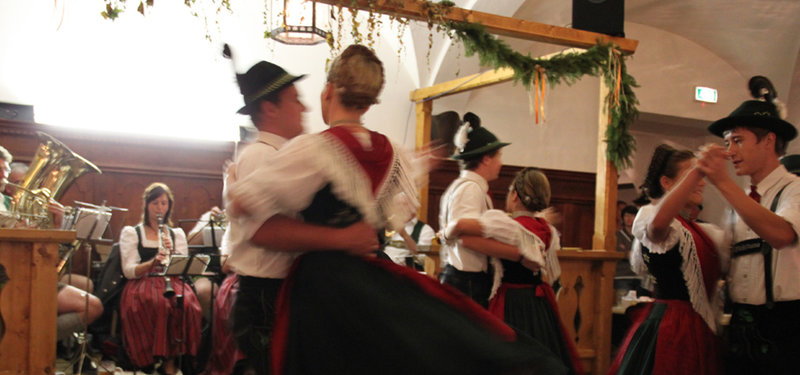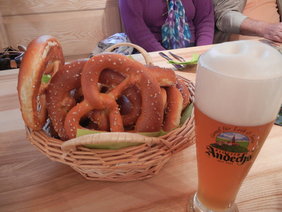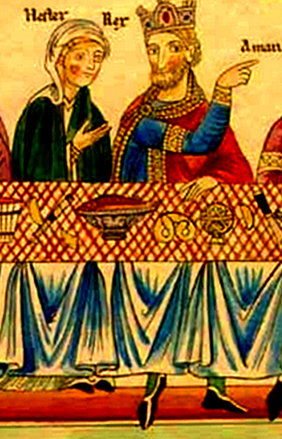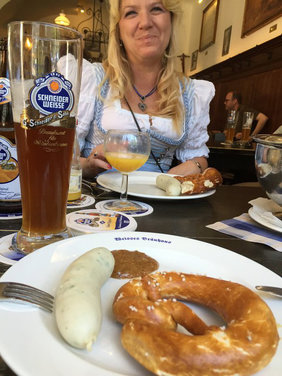Except for beer, is there any Bavarian foodstuff more internationally known as the pretzel? In honor of National Pretzel Day on April 26, let’s take a closer look. The history and “discovery” of the pretzel is clouded with plenty of legends and counter claims.
Unlike North Americans, Bavarians would never think about eating their pretzel with mustard on it. Sure, they might mop up a little extra mustard from their plate using the pretzel, but that’s the extent of it. However, there is such a thing as a “Butterbreze” whereby the pretzel is sliced in half, then buttered, and placed back together. This can be done at home or you can pick one up in a bakery. Another variation on this is a lighter, airy form of cream cheese (Frischkäse) or this with chives added to the butter or cheese. These forms are typically at breakfast time. For a snack later in the day, it’s common to enjoy the pretzel with a portion of Obaztda.
As a German cultural import, the pretzel is popular in the United States. These are typically made there as a soft pastry and with a significantly higher sugar content than in Germany. The US version is much softer and usually lacks the distinctive chewiness. To add further insult, they are often smeared with mustard or dipped in a runny cheese-like chemical substance when consumed. Thankfully, finding more authentic varieties in North America is becoming easier. The hard pretzels, however, are a distinctly US invention. In 1850 the Julius Sturgis bakery in Lititz, Pennsylvania, became the first commercial hard pretzel bakery. (Pruitt, 2020)
The history of the Pretzel – 2 Legends
According to the Bread Museum in Ulm, the origins of the pretzel lie in ring bread found in ancient Rome. The early Christians used the ring-shaped bread for the sacrament already in the 2nd century. The word, Brezel, is derived from the Latin word brachium, which means "arm". The crossed shape of the dough ends reminds us of human arms, crossed in the old style of prayer with the arms crossed across the chest.
But the key to these soft German pretzels are that they are coated with lye – yup, caustic soda, or NaOH. This is credited to the baker Frieder, who fell out of favor with Count Eberhard in Urach, Swabia and was sentenced to death. However, Frieder was given the opportunity to save his life if he could bring pastries within three days “that the sun could shine through three times”.
Freider spends three frantic days and is finally stuck with inspiration when he sees his wife standing, silhouetted, in the door frame with her arms crossed impatiently. He creates the new pasty based on this design, but his cat ruined it all when it jumped down on the tray, hurtling the new creations into a bucket of lye. With time almost up, Freider shoves them into the oven anyway and resigns himself to an early death. Thankfully, Count Eberhard loved the new creation and Freider's life was spared. (Not sure what happened to the cat).
This great legend is, alas, a lie: The current form of the pretzel was already known in the late 12th century, that is, about 200 years before Count Eberhard (1445-1496) lived in Urach. (Museum der Brotkultur Ulm, 2019)
Bavarian history tells us the invention of the pretzel was a mistake: The baker Anton Nepomuk Pfannenbrenner was preparing the breakfast at the royal coffeehouse of court supplier Johann Eilles. In February 1839, however, he made a serious mistake. Usually his pretzels were glazed with sugar water, but that day he accidentally picked up the lye that was used to clean the baking sheets. When the first guest arrived, the royal Württemberg ambassador Wilhelm Eugen von Ursingen, the result was well received indeed. (Hallwachs, 2020)
Wie sagt man “Pretzel” auf Deutsch?
If you go to a German speaking country, you will find several different forms of spelling and speaking the word Bretzl: In standard German and Swiss-German , Hochdeutsch, it is die Bretzel. In Bavaria it’s die Breze or, plural, die Brezn. In Austria it’s das Brezel und die Breze. And in the Bavarian part of Swabia, you may run into Brezg. You can which version is used where on a map of the German speaking lands: Map (Universität Augsburg Philologisch-Historische Fakultät , 2016)
Pretzels are obviously loved in Germany. Toddlers love to gnaw on them as the cut their first teeth, the trade symbol for bakers is a pretzel and there are other references to pretzels in the language that have nothing to do with baking:
- Das geht wie das Brezelbacken! That’s as easy as baking pretzels!
- Sich verbiegen wie eine Brezel To bend yourself up like a pretzel
- Aufbrezeln: to gussy yourself up (Bavarian).
- Breznsalzer: Pretzel Salter. My favorite insult – the insinuation is that you are so stupid all you can manage is to put salt on pretzels! (Bavarian)
Munich’ Pretzel Rider (Breznreiter)
The rich married couple, Burkhard and Heilwig Wadler, lived in Munich, and their fortune stemmed from the salt trade. Starting in 1318, the Wadlers began regularly donating to the Holy Spirit Hospital. With this donation, the poor and sick in the hospital could be fed once a week.
Once a year, on St. John the Evangelist Day (Dec 27), all the Munich residents could benefit from the "Wadler donation" and so the Brezen rider rode through the city on a white horse, handed out pretzels and announced the "Pretzel donation" of the merchant family. While the pretzel rider was distributing a few of the pretzels, he called "You young and old people, go to the Holy Spirit, where the Wadler Pretzels is!" (It sounds better in German: „Ihr jung und alte Leut, geht’s hin zum Heiligen Geist, wo’s die Wadler Pretzen geit!“)
The pretzel edition of almost 3,000 pretzels took place once a year at the Heilig Geist Spital (at the Heilig Geist Church on today's Munich Viktualienmarkt). 3,000 pretzels were a large donation to 8,000 Munich citizens at the time.
This tradition of donating pretzels took place in Munich for almost 500 years. It was not until 1801 that the city council banned the pretzel rider because the custom led to turmoil in the fight for free pretzels. You can see this scene from Munich’s history depicted in the ceiling fresco on the Heilige Geist Spital church adjoining Viktualienmarkt. (Munichkindl, 2020)
USA National Pretzel Day – April 26
National Pretzel Day began in 2003 when Pennsylvania Governor Ed Rendell declared April 26 “National Pretzel Day” to acknowledge the importance of the pretzel to the state’s history and economy. Today, the average Philadelphian consumes about twelve times as many pretzels as the national average. Producing 80% of US-made pretzels, Pennsylvania remains the center of American pretzel production. (National Day Calendar, 2020).
Best Pretzels
It's hard to find a bad pretzel here in Bavaria - the key is finding a fresh one. My favorites are at the Hofpfisterei in Munich. They have outlets all over and there pretzels are always good. The other one that comes to mind is my friend in Böbing, Sepp Tralmer at Bäckerei Tralmer. His are organic and must be eaten fresh. If you wait too long, they get hard. When fresh, they are really amazing!
Works Cited: There are so many stories, legends, and myths surrounding the pretzel. If you want to dive down the rabbit hole, here’s the bibliography for my article:
Hallwachs, J. (2020, April 209). Was isst Deutschland? Retrieved from www.worldsoffood.de: https://www.worldsoffood.de/specials/was-isst-deutschland/item/2177-die-geschichte-der-brezel.html
Munichkindl. (2020, April 20). Munichkindl. Retrieved from www.munichkindl.net: https://www.munichkindl.net/brezenreiter
Museum der Brotkultur Ulm. (2019, March 27). Retrieved from https://web.archive.org/web/20190327091644/http://www.museum-brotkultur.de/pdf/07Brezeln.pdf
National Day Calendar. (2020, April 20). NATIONAL PRETZEL DAY – April 26. Retrieved from National Day Calendar: https://nationaldaycalendar.com/days-2/national-pretzel-day-april-26/ Pruitt, S. (2020, January 30).
The Pretzel: A Twisted History. Retrieved from History.com: https://www.history.com/news/the-pretzel-a-twisted-history Redensarten Index. (2020, April 20).
Redensarten Index. Retrieved from Redensarten Index: https://www.redensarten-index.de/suche.php?suchbegriff=~~Das+geht+ja+wie+das+Brezel+backen+%2F+Brezelbacken%21&suchspalte%2525252525252525255B%2525252525252525255D
Universität Augsburg Philologisch-Historische Fakultät . (2016, July 26). Register der Varianten. Retrieved from Universität Augsburg Philologisch-Historische Fakultät : https://www.philhist.uni-augsburg.de/lehrstuehle/germanistik/sprachwissenschaft/ada/runde_7/f01c-d/


